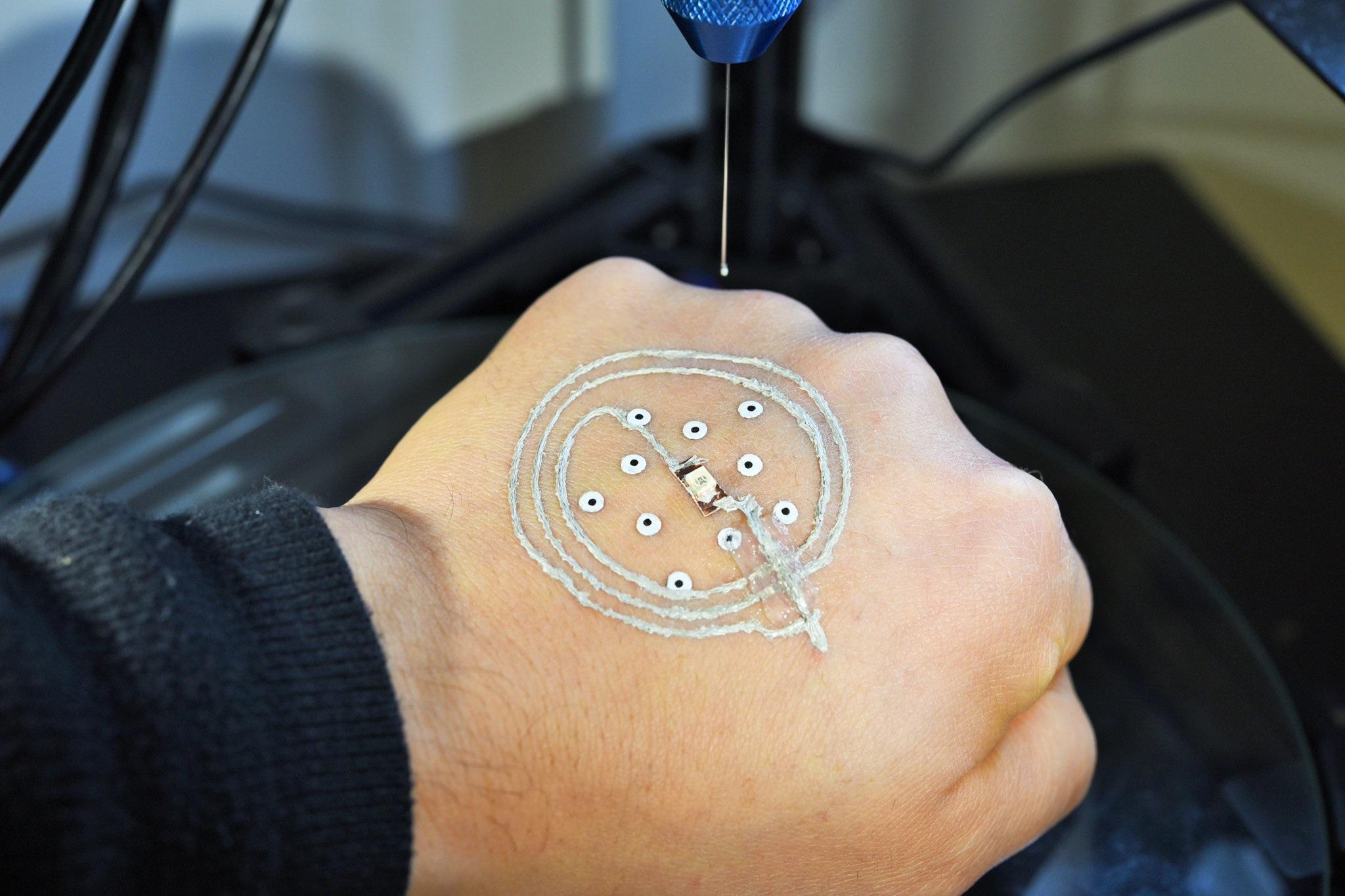Electronic tattoo 3D printed onto skin is 'Swiss Army knife of the future'
The new technology can be used to print biological cells into wounds to help them heal

Your support helps us to tell the story
From reproductive rights to climate change to Big Tech, The Independent is on the ground when the story is developing. Whether it's investigating the financials of Elon Musk's pro-Trump PAC or producing our latest documentary, 'The A Word', which shines a light on the American women fighting for reproductive rights, we know how important it is to parse out the facts from the messaging.
At such a critical moment in US history, we need reporters on the ground. Your donation allows us to keep sending journalists to speak to both sides of the story.
The Independent is trusted by Americans across the entire political spectrum. And unlike many other quality news outlets, we choose not to lock Americans out of our reporting and analysis with paywalls. We believe quality journalism should be available to everyone, paid for by those who can afford it.
Your support makes all the difference.
Researchers have figured out a way to place electronics directly onto a person’s skin using a 3D printer, paving the way for wearable sensors and even solar cells that can charge electronics.
Researchers at the University of Minnesota developed the 3D-printing technique using ink containing conductive silver flakes, which can be peeled off the skin when the so-called electronic tattoo is no longer needed.
Potential uses for the new technology also include printing biological cells into wounds to help them heal, which the researchers believe could lead to new medical treatments for injuries and skin grafts.
“We are excited about the potential of this new 3D-printing technology using a portable, lightweight printer costing less than $400,” said the study’s lead author Professor Michael McAlpine.
Professor McAlpine envisions the first uses of the electronic tattoos within a military context, assisting soldiers on the battlefield by placing sensors on their bodies that can detect chemical or biological agents.
“We imagine that a soldier could pull this printer out of a backpack and print a chemical sensor or other electronics they need, directly on the skin,” Professor McAlpine said.
“It would be like a ‘Swiss Army knife’ of the future with everything they need all in one portable 3D printing tool.”
The new 3D-printing technique forms part of a growing trend that has seen scientists developing electronic tattoos for the purpose of augmenting the human body’s natural capabilities.
Researchers at the University of Illinois are currently developing am “optoelectronics system” that monitors a wearer’s health through an electronic sticker.
Another team from Seoul National University in Korea has previously developed a flexible skin patch made of graphene that is able to detect the blood glucose levels of diabetics.
One of the biggest innovations of Professor McAlpine’s research is the use of computer vision to print the tattoo on skin, even if it is not completely still.
“No matter how hard anyone would try to stay still when using the printer on the skin, a person moves slightly and every hand is different,” Professor McAlpine said.
“This printer can track the hand… and adjust in real time to the movements and contours of the hand, so printing of the electronics keeps its circuit shape.”
The research was published in the academic journal Advanced Materials this week.
Join our commenting forum
Join thought-provoking conversations, follow other Independent readers and see their replies
Comments